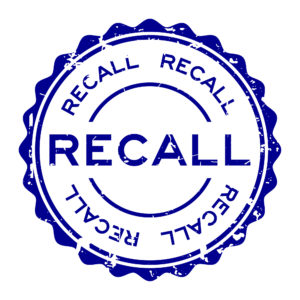Following up on our earlier post on the 2018 valsartan contamination, much has happened over the last six months.

In our original post, we discussed the appearance of impurities in valsartan to which no one had previously paid attention:
“Last year’s valsartan contamination and recall brought some surprising chemical synthesis issues to light in the pharma industry. While the reactions used in generic valsartan production are known to be a source of certain impurities, they were below current disregard limits and didn’t raise any red flags. It was the impurities that no one thought to look for, however, which led to the recall.”
The issue had come up when chemists didn’t realize their process – while successful at eliminating toxicity due to sodium azide – generated another toxic substance: the carcinogen N-nitrosodimethylamine (NDMA).
The manufacturer did do everything right, even imposing higher-than-required standards in some cases. The entire valsartan incident seems to be an indicator that the pharma industry has been focused on the quality of APIs, but wasn’t paying sufficient attention to the safety of chemical synthesis processes.
 We concluded the article with:
We concluded the article with:
“The troubling question is: How many NDMA, NDEA, ethyl mesilate and other highly toxic, low concentration, impurities might lie hidden in the hundreds of pharmaceutical ingredients made by thousands of manufacturers around the world?
Something needs to change in our quality management of pharmaceutical ingredients, not only to prevent similar contaminants in the future, but also to become aware of the ones which may be there – right now – in our medicines.”
Regulatory Response – Changes in Motion
We are already seeing changes. Regulators seemed to have reached the same conclusion our earlier post reached – and have expanded their inquiries to other drugs.
From the Regulatory Affairs Professional Society came news in August, 2019 of further contaminant-related enforcement: “The fallout from the N-Nitrosodiethylamine (NDEA) and N-Nitrosodimethylamine (NDMA) impurities fiasco continues as the US Food and Drug Administration (FDA) last week sent a warning letter to India-based Lantech Pharmaceuticals.”
- In September 2019, the FDA reported that it found NDMA contaminants in drugs containing another API. (The drug company issued a voluntary recall in November).
- In October: “the Swiss Agency for Therapeutic Products revises the test it uses to assess whether sartan medicines are contaminated with nitrosamines.”
- Also in October, the FDA issued a warning letter to Torrent Pharmaceuticals over impurities in Sartan APIs.
 November was a busy month for impurities, too. The FDA announced in had issued a warning letter to Mylan over valsartan manufacturing violations. Mylan had been one of several companies that issued recalls due to NDMA and NDEA impurities.
November was a busy month for impurities, too. The FDA announced in had issued a warning letter to Mylan over valsartan manufacturing violations. Mylan had been one of several companies that issued recalls due to NDMA and NDEA impurities.
Also in November, the director of FDA’s Office of Compliance raised several concerns with the API industry – one of which was the presence of NDMA and NDEA in recent recalls.
This coincided with the release of an interim report from the FDA’s ongoing investigations of nitrosamine impurities in certain APIs. In FDA Updates Investigations into Impurities in APIs (November 2019), DCAT’s Patricia Van Arnum reported:
“The FDA is also asking manufacturers to continue conducting their own laboratory testing to examine levels of NDMA … Additionally, the FDA has requested that manufacturers of nizatidine test their drugs. The agency says it is still working with manufacturers to investigate the true source of NDMA and to understand the root cause of the low levels of NDMA present in the drugs.”
Grappling with nitrosamine contaminants seems to be a work in progress. Stay tuned.
Want to read our earlier piece detailing the valsartan incident? Here’s the post – How the Valsartan Contamination Happened: Its Context & Implications.










